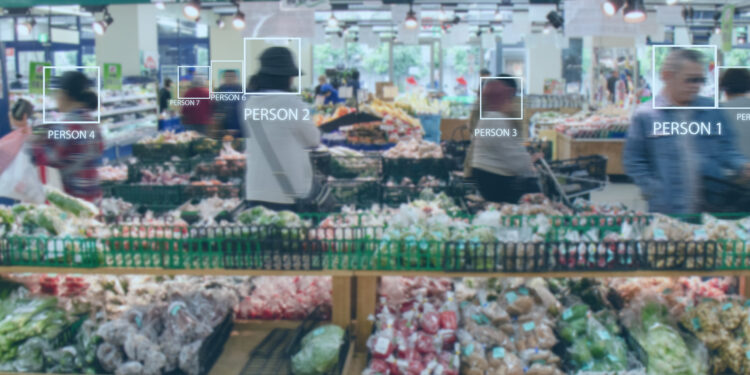A machine that can mimic how a human see has always fascinated people. Recreating how a human eye functions actually started in the 50s, and since then, there has been a lot of progress. Computer vision today is a function you can find in mobile phones through cameras or various e-commerce apps.
Computer vision’s progress has been largely thanks to the improvement in disruptive technologies, like artificial intelligence (AI) and its many subsets, including machine learning (ML) and deep learning (DL). Now that computer vision’s use is becoming ubiquitous, the market is estimated to be worth USD48 billion by 2022. Currently, it’s considered to be among the most promising UX or user experience technology out there.

Computer Vision Definition
Computer vision is a part of artificial intelligence that teaches computers to process, analyze, and interpret images, videos, and other visual data. Machines with deep learning models that use digital images from videos and cameras can classify and recognize objects, and then respond to these objects.
AI’s subsets, such as machine learning and deep learning, are further aided by continual learning (CL); as its name suggests, continual learning aids AI models to continually learn from a data stream.
Computer vision systems are used for tasks like these:
- Object Tracking. The technology detects objects of a particular class, like people, vehicles, or animals. For instance, detecting a specific car among other vehicles.
- Objects Identification. Examines visual content and recognizes specific objects on a video or photograph, like a particular person’s face or fingerprint.
- Image Classification. Examines visual content and categorizes a particular image on a video or photograph, like assigning a label among all the other objects found in the video or photograph.
This recommended reading material also lists down more applications of computer vision.
How A Computer Vision Functions
One of the hypotheses on how your brain recognizes an object is that it relies on patterns to interpret each object. This idea is used in computer vision systems to mimic the human brain. Currently, the algorithms used for computer vision are rooted in recognizing patterns. Computers are trained by feeding them a huge amount of visual information; the computers then find patterns in the objects after classifying them.
For instance, if you feed your computer images of an object, say a coconut tree, the computer will parse the images, recognize the patterns from all the coconut trees it had parsed before, and finally, produces a model of a coconut tree. Next time, the computer will recognize a coconut tree from the images it comes across.
The Development Of Computer Vision
When it first started in the 1950s, experiments used early versions of neural networks to perceive the edges of objects. This early computer vision was also used to categorize simple objects, like squares and circles. Then, in the 70s, computer vision was used mainly for interpreting handwritten and typewritten texts. This was an early version of optical character recognition, which was used to help the blind interpret written texts.
The procedures then were simple, compared to the analysis that modern computer vision performs. But it took a lot of work from human operators–they had to manually provide the data samples for analysis. Not only was this process labor-intensive, but the computing power then wasn’t up to snuff, so the margin of error was very high. AI and machine learning were still in their infancy, too.
With today’s computing power and slick algorithms, solving overly complex problems is a piece of cake. Not only that, but with the amount of visual data available publicly, computer vision systems are constantly trained, which results in the further improvement of computer vision. The sheer amount of data that the computers process helped computer vision systems to become more sophisticated. It can now recognize specific people in digital images, among other things.
Computer vision has been integrated into various areas of people’s lives. A few examples of where this technology is used include facial recognition, self-driving cars, and content organization. It’s also used in almost all industries, like healthcare, agriculture, retail, banking and finance, and many more.
The Arrival Of Deep Learning
Today’s version of computer vision relies on deep learning, which employs algorithms to extract insights from a vast amount of information. Meanwhile, machine learning depends on AI to function as a framework for both technologies. Deep learning integrates well with machine learning, a subset of AI.
With deep learning, computer vision functions effectively. It employs an algorithm called neural network, which is effective in gleaning patterns from the available data sets. ‘Neural network,’ as an algorithm, is inspired by the neurons’ interconnections in the human cerebral cortex. Machine learning algorithms are used to process data; deep learning, meanwhile, is dependent on Artificial Neural Networks (ANN).
Conclusion
Computer vision is one of the results of the advancements in the field of artificial intelligence. The development of sophisticated algorithms, the increase of computing power, and the availability of petabytes of data helped computer vision to improve tremendously in the past few years.
It’s used in many sectors that have greatly helped people, including healthcare, retail, financial services, agriculture, and many more. Its potential is virtually limitless. Computer vision is one of those advancements that are crucial towards the development of artificial intelligence that people only see in works of fiction.











